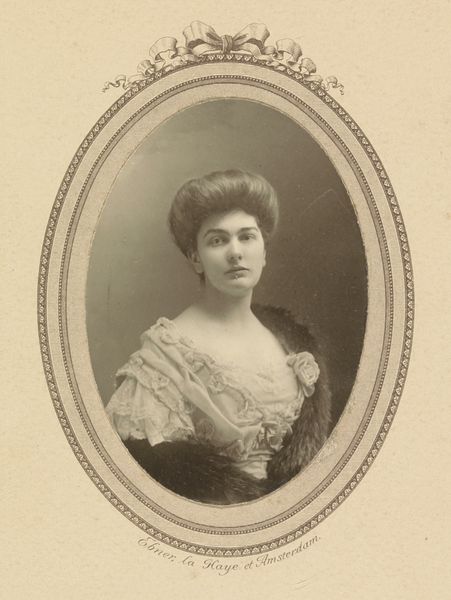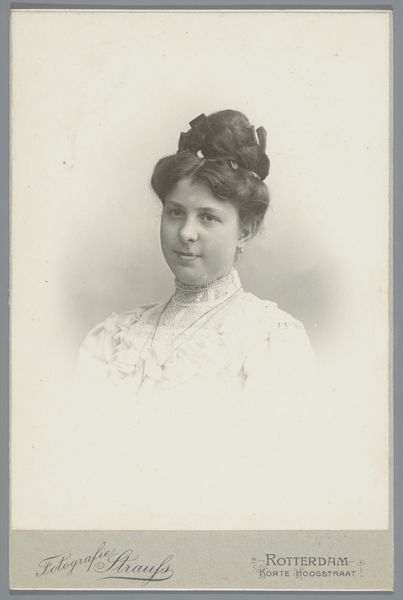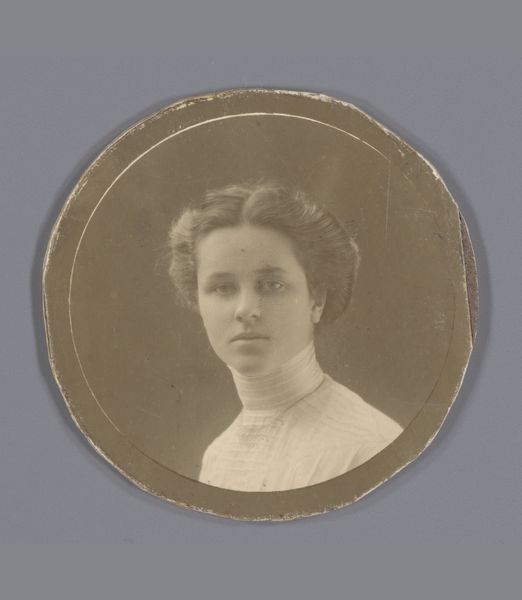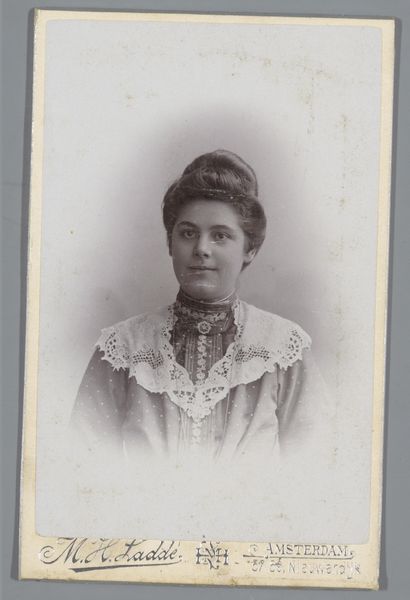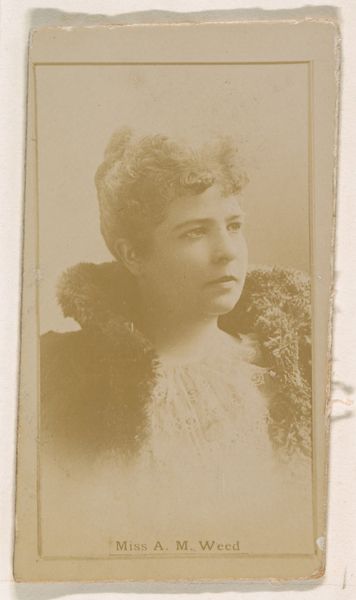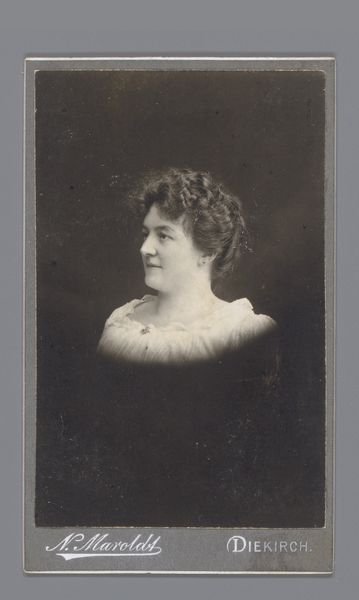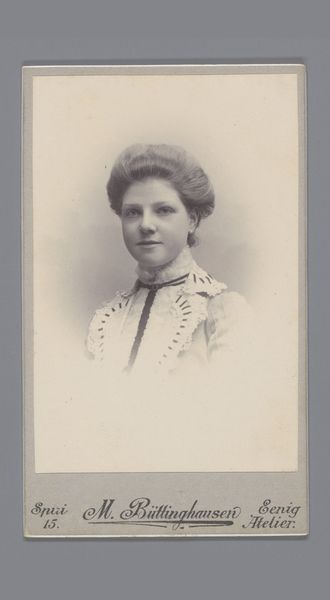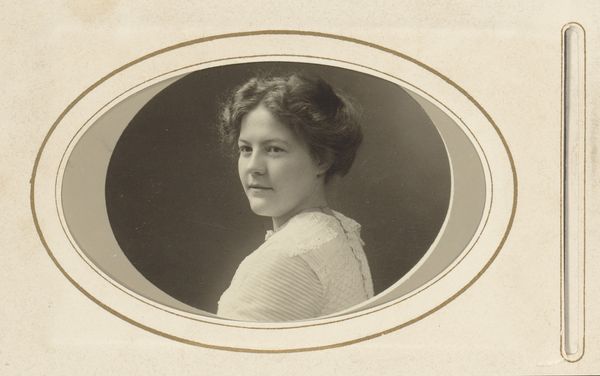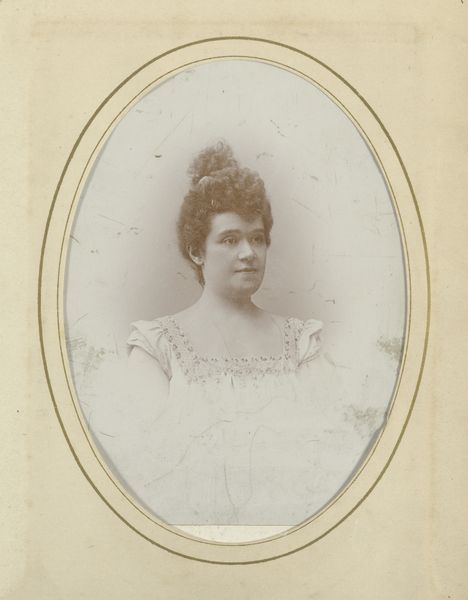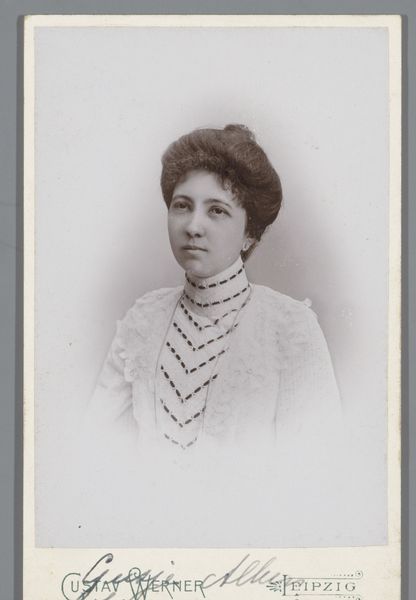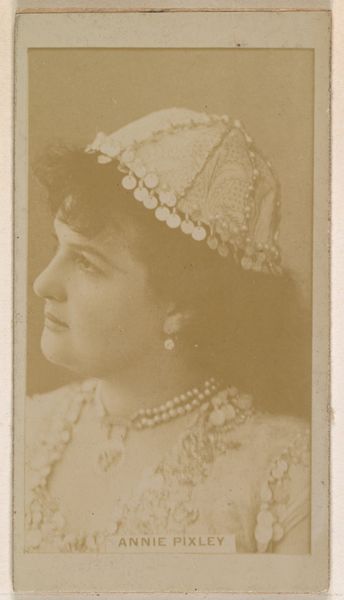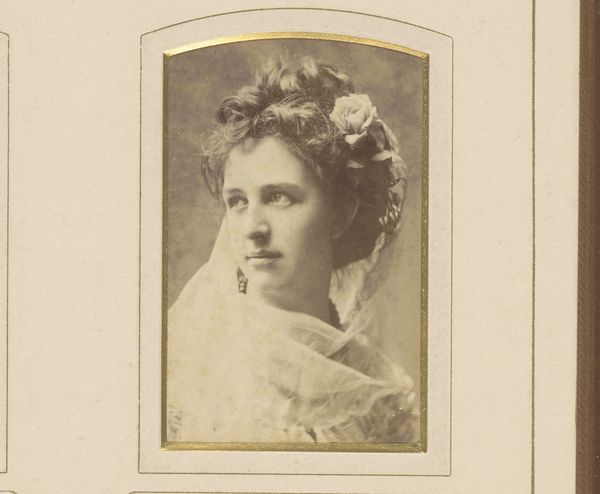
photography
#
portrait
#
photography
Dimensions: height 228 mm, width 167 mm, height 310 mm, width 260 mm
Copyright: Rijks Museum: Open Domain
Curator: This captivating portrait photograph, entitled "Portret van een vrouw in wandelkostuum bij een bank," created sometime between 1910 and 1930 by Atelier Prinses, draws us into a specific era. What strikes you immediately about it? Editor: A quiet dignity. There’s a self-assuredness in her gaze, despite the muted sepia tones. The oval frame feels almost like a cameo, holding a treasured memory. Curator: The artist's use of photography is really remarkable. I'm drawn to her 'wandelkostuum,' the walking costume; clothing was a symbol, communicating social status, identity and occasion in ways hard to imagine now. It whispers of leisurely promenades, social calls. The suggestion of the "bank" or bench gives just enough information to place her in a park or a garden, reinforcing this sense of quiet gentility. Editor: The details absolutely matter. Note the pearl necklace – a classic symbol of purity and status. Then look at the shawl, a swirl of embroidered patterns over her shoulders. Those swirls introduce a certain movement, dynamism to what otherwise could be a static image. And what do we know about "Atelier Prinses?" Curator: It was, during this time, typical for such portraits to come from professional studios, where consistent aesthetics and skilled professionals presented the sitters in their best light, carefully guiding poses, outfits and staging. Consider, too, that photography was not yet ubiquitous – commissioning a portrait photograph was an act laden with intention, communicating the subject’s desire for posterity and self-definition. The portrait, displayed perhaps in a home or given as a memento, reinforces cultural memory, making family history material. Editor: So, in essence, we are not merely looking at a woman, but a representation meticulously constructed and imbued with symbolic weight. Curator: Exactly. By understanding these contextual and symbolic layers, the portrait transcends a mere image and offers a glimpse into the socio-cultural fabric of the past. Editor: I hadn't considered it that way, initially captivated only by her quiet confidence, but seeing her as a participant in these constructed meanings is really powerful. Curator: And these constructions are not simply frivolous conventions; they are ways of creating meaning. The symbolic content reflects a collective consciousness about status and propriety, shaping individual identities and desires. Editor: Seeing through those layers makes her more human, actually, even more enigmatic. Thank you for illuminating so many layers to unpack.
Comments
No comments
Be the first to comment and join the conversation on the ultimate creative platform.

